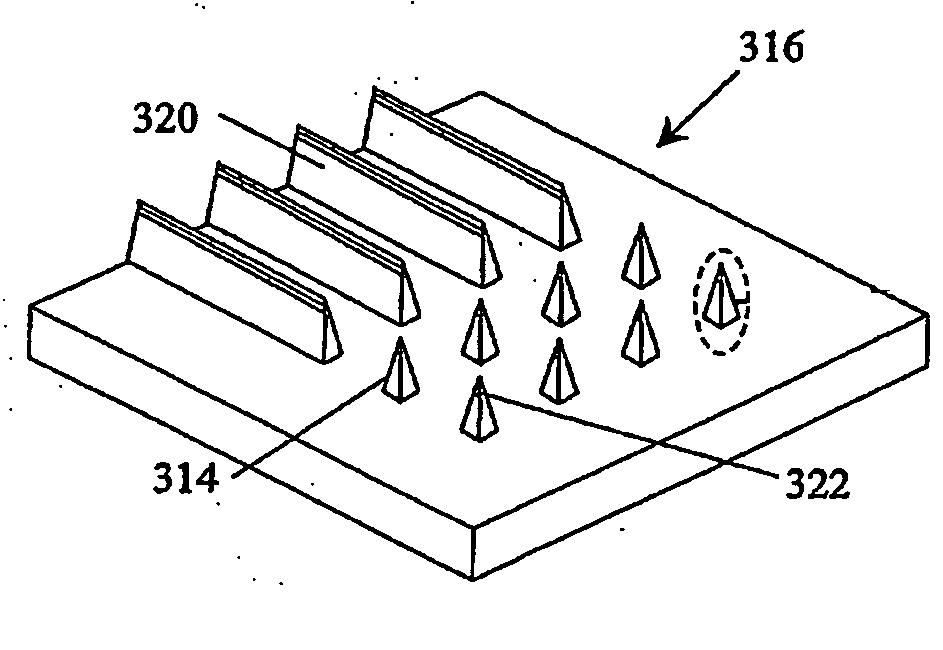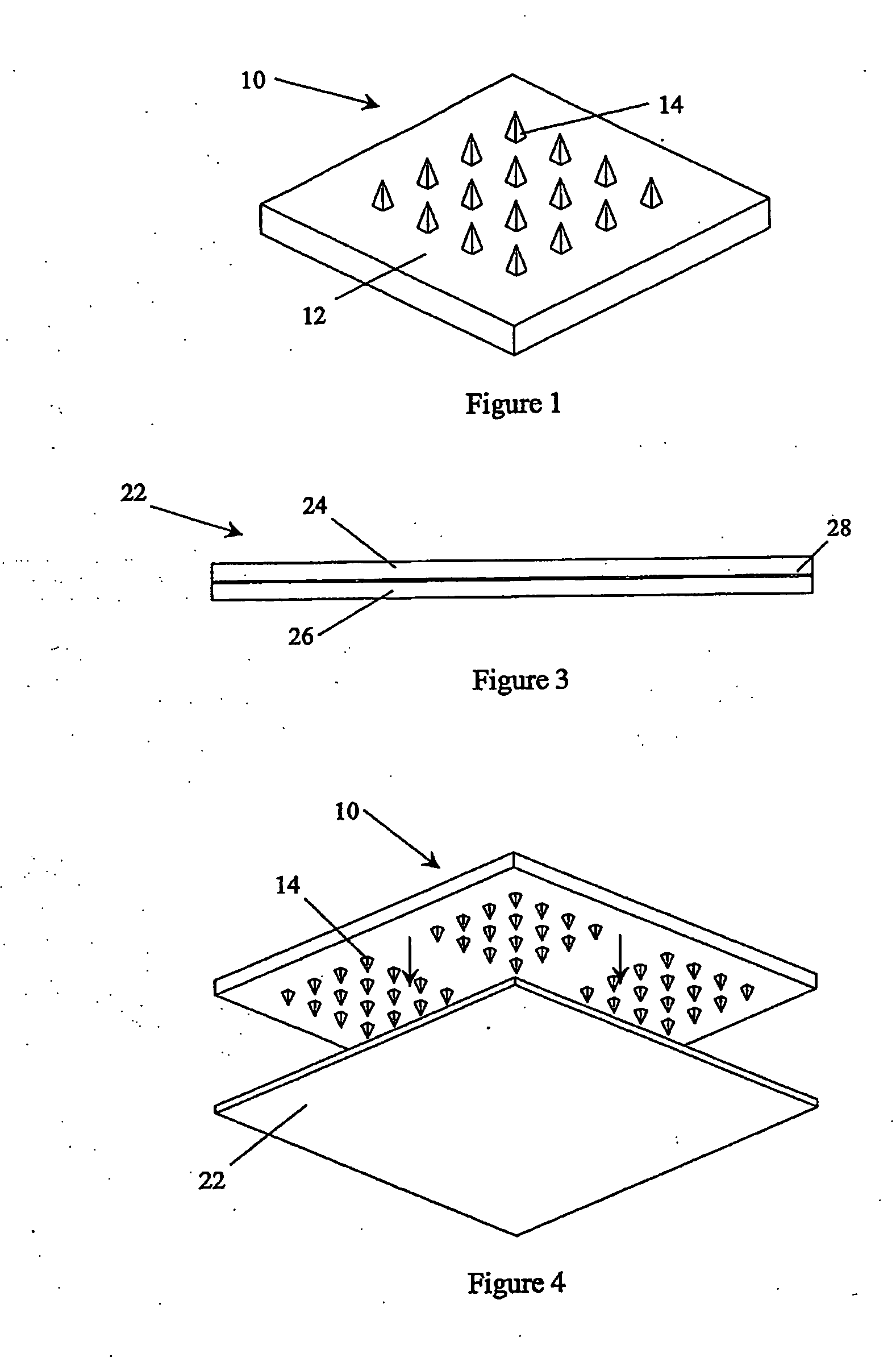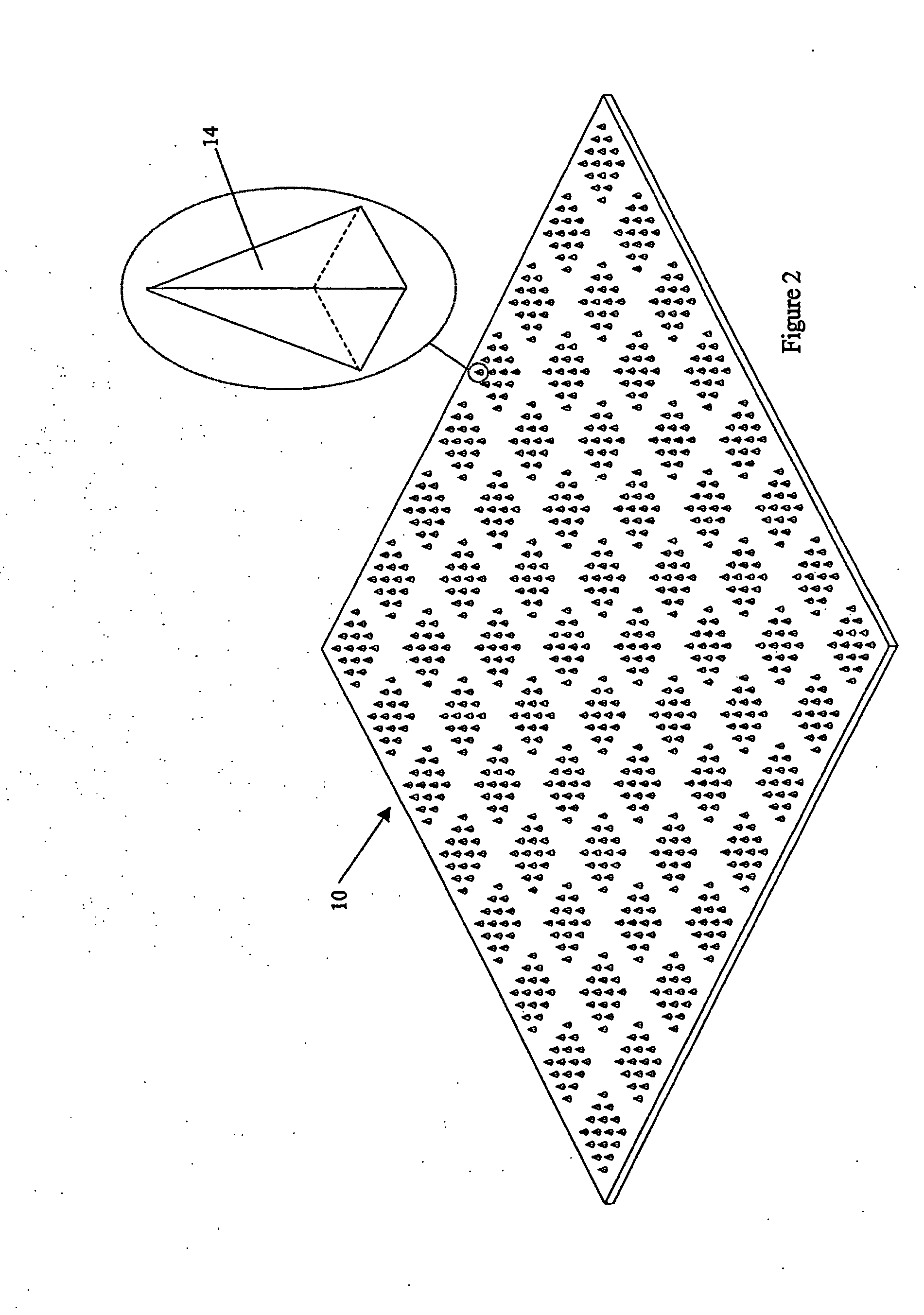Methods and moulds for use in fabricating side-ported microneedles
a technology of side-porting and microneedles, which is applied in the direction of manufacturing tools, foundry moulding apparatus, foundry patterns, etc., can solve the problems of microneedles that are too soft, too brittle (made of silicon or glass), and/or too expensive,
- Summary
- Abstract
- Description
- Claims
- Application Information
AI Technical Summary
Problems solved by technology
Method used
Image
Examples
first embodiment
Alternative Geometries and Other Variations of the First Embodiment
[0076]The microneedle mould plate 22, used to make the microneedle mould 40, is shown in the above embodiment (with reference to FIGS. 1 to 5) as being thicker than the height of the master mould needles 14. Alternatively, the thickness of the microneedle mould plate 22 and the height of the master mould needles 14 may be the same. The height of the master mould needles 14 may even be greater than the thickness of the microneedle mould plate 22. In the hot-pressing process, the extra height of the master mould needles 14 would then be accommodated into recesses of the lower plate of the hot press or into recesses into an extra plate on top of the lower plate of the hot press. In this manner, the recesses 30 (as shown in FIGS. 5 to 10) in the microneedle mould 40 become through-holes. This can improve the throwing power in the later electroforming step.
[0077]In the above-described embodiment, the side-port forming cha...
second main embodiment
[0102]A second main embodiment for making microneedles with side openings is now described. This method does not use two or more stacked embossing sheets as in the above-described first main embodiment and its variations. Instead the anomalies in the microneedle layer are introduced through the production process in the master mould.
[0103]During the production of the master mould, a short part of one side of each master mould needle is made normal to the base surface of the master mould. The variant master mould may, for instance be made by way of a similar process to that employed to make the master mould of FIGS. 1 and 2. Such a process is now described with reference to FIGS. 21A to 21D.
[0104]FIG. 21A is a side view of a tool steel plate 316 after a first cut, in a similar manner to the first cut made to produce the part formed master mould of FIG. 19B (although producing a slightly blunter ridge in this embodiment). A first parallel set of ridges 320 has been produced. However, ...
PUM
| Property | Measurement | Unit |
|---|---|---|
| diameter | aaaaa | aaaaa |
| diameter | aaaaa | aaaaa |
| diameter | aaaaa | aaaaa |
Abstract
Description
Claims
Application Information
 Login to View More
Login to View More - R&D
- Intellectual Property
- Life Sciences
- Materials
- Tech Scout
- Unparalleled Data Quality
- Higher Quality Content
- 60% Fewer Hallucinations
Browse by: Latest US Patents, China's latest patents, Technical Efficacy Thesaurus, Application Domain, Technology Topic, Popular Technical Reports.
© 2025 PatSnap. All rights reserved.Legal|Privacy policy|Modern Slavery Act Transparency Statement|Sitemap|About US| Contact US: help@patsnap.com



